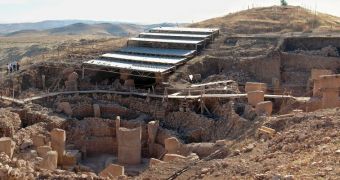Until now, the archaeological site at Göbekli Tepe, in Turkey, was thought to have revealed the most ancient temples ever discovered. However, in a new study, a team of experts casts doubt on the nature of the constructions, suggesting that they were not in fact homes for the gods.
The University of Toronto experts who conducted the study were led in the effort by archaeologist Ted Banning. Details of their work appear in the October issue of the journal Current Anthropology.
Göbekli Tepe is a hill located outside the city of Urfa. Some 16 years ago, German Archaeological Institute expert Klaus Schmidt discovered the first buildings at the site, which dating methods proved to have been constructed about 10,000 years ago.
Schmidt interpreted the location as being the world's oldest religious site, but Banning suggests otherwise. His recent investigation discovered traces of routine activities conducted at these locations, such as for example food preparation and the making of flint tools.
Such mundane activities would have been out of place in a religious temple, the investigator proposes. However, Schmidt's hypothesis is not to be contradicted lightly, he agreed. The large buildings discovered at the site feature massive carvings of animals, including foxes, snakes and scorpions.
The German archaeologist suggested that the lack of additional housing near Göbekli Tepe most likely meant that this location was a target for pilgrims, Science Blog reports. Given that the buildings were erected in the early Neolithic, such a finding would have been staggering.
“The presence of this evidence suggests that the site was not, after all, devoid of residential occupation, but likely had quite a large population,” Banning says, referring to the daily tasks he and his team found evidence of at the site.
Given that no other residential structures were found, the only possible explanation was that the people living here were sleeping in the temples themselves. Banning believes that the idea stating that the presence of art excludes human settlement in those distant times is false.
“The presupposition that ‘art,’ or even ‘monumental’ art, should be exclusively associated with specialized shrines or other non-domestic spaces also fails to withstand scrutiny,” the expert explains.
“There is abundant ethnographic evidence for considerable investment in the decoration of domestic structures and spaces, whether to commemorate the feats of ancestors, advertise a lineage’s history or a chief’s generosity; or record initiations and other house-based rituals,” he adds.
The new proposal is bound to ignite a fiery debate in the international scientific community. In the end, more studies will be conducted on this issue, perhaps extending existing digs.

 14 DAY TRIAL //
14 DAY TRIAL //